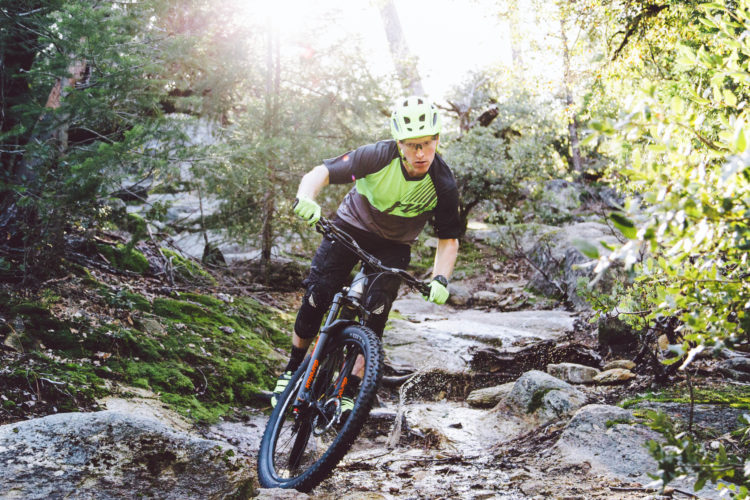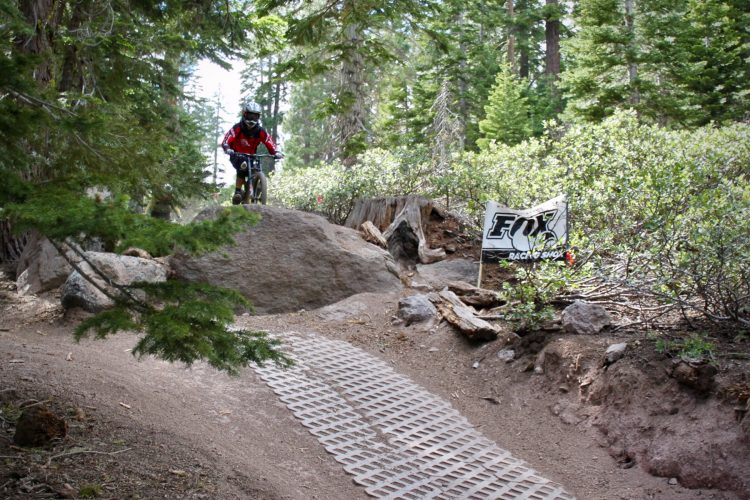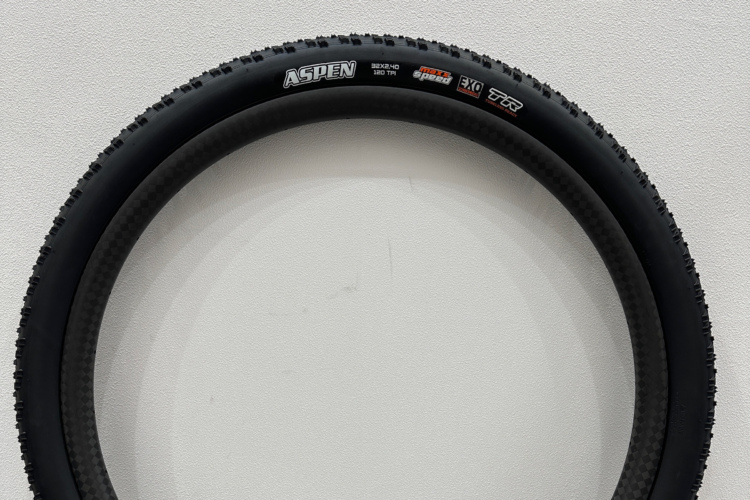
You may know someone with titanium bones whose injury recovery time after a nasty crash lasts as long as it takes them to find their GoPro in the duff. For the rest of us, recovering from mountain bike injuries is an inevitable payment for all of the fun. We can practice new and essential skills to keep ourselves on the bike as much as possible, but when our front tire finds a loose rock at just the wrong time, the result is largely out of our hands.
For professional athletes and amateurs alike, recovering from an injury can be a deeply frustrating process. We don’t get to participate in our favorite activity, we lose fitness, we miss time with our riding community, and we pine for the happy chemicals that our brains produce on the trail. Professional athletes have the added obligation to get back on the bike quickly, with a high level of fitness.
Stress and loss of activity during recovery can have a painful impact on our mental health, and working through the psychological side of recovery is as essential as properly rehabbing our bodies. Once we are ready to ride again, the psychological trauma associated with our last crash can be difficult to overcome. Fortunately, there are sports psychologists and therapists who can help us work through the recovery period, and regain confidence once we are cleared to ride again.
Longtime Swedish National Mountain Bike Team coach, Annie Söderberg, has recently returned to her former sports psychology profession, where she works with athletes from a wide variety of sports. Söderberg has been mountain biking since 1998, standing on the podium at Swedish national championships in downhill, BMX, and road racing disciplines, as well as a 3rd place overall finish in the Enduro Sweden Series.
I met Söderberg at the IMBA Europe summit in May, where she presented some techniques that help riders gain focus and remain present on the bike. Later we discussed her role working with athletes as they recover from injury, and she was keen to share a glimpse of that process.

What are some of the first steps you take with a new client who has injured themselves and hopes to quickly return to their sport at the same level?
We get to know each other. We set goals for our coming work (in returning to sport) and we make a functional behavior analysis together. We look with curiosity at potential obstacles and we plan for lowering them. Some [obstacles] cannot be taken away, so we aim to lower them instead.
If a client is anxious about not being able to exercise enough during recovery and is concerned that their mental health will deteriorate as a result, what are some ways you work with them through this period?
Recovery sometimes is a really hard time for an athlete. If you have an injury that you physically can rehab or you can still use your body in some way to get stimuli or get physically tired it can sometimes be a bit easier than if you have an injury that you have to be as still and relaxed as possible (like a head injury).
Head injuries sometimes mean you cannot be physical, you can not use screens (computer/TV/phone) and you can not listen to music if it is bad. Basically, all the usual stimuli disappear and you have plenty of time to ruminate over exactly everything. Having someone to talk to, to share the experience with, being with friends and family, even if you cannot participate in the usual way, can still give you a sense of social belonging.
Celebrate the steps you take forward. If one day you can do your first push up on your knees after a shoulder injury [that] is awesome. Celebrate. When you can do five on your knees, maybe you can do one on your feet. Use the rehabilitation program with good goal setting to help you along the way. If you experience a tough time during recovery, and you feel stuck in your own head, talk to a clever friend or seek expert support like a sports psychology practitioner.
What have you done with clients to help them see value in what the physical therapist and doctors are asking them to do, or not do?
Involving the athlete in the planning of the physical rehab program and setting rehab goals can be helpful. Goals should include result, performance, and process goals. Be prepared to talk about setbacks that we all know can occur during rehab. Discuss how you as the athlete want to/will approach the setbacks. I would ask: “What might be obstacles for you during the rehab process and how can you lower the obstacles?”
We know that adherence to rehab-programs is sometimes a bit so-and-so, some are prone to do a little too much and some do too little. You probably have a feeling where in the spectrum you are, and that could be a good start when you think about possible obstacles like boredom, wanting to get back faster, etcetera.
Do you have mindfulness practices or coping tools that you ask clients to try while they are recovering? For example, what can I do if I get really frustrated about not being able to ride, or to be with my community?
Frustration on its own isn’t all that bad; it is a feeling and thought that will pass after a while if we can see [it for what it is]. [These feelings] might even pass faster if we accept them, than if we try to shut them up. Be willing to be honest and to feel, even the difficult and hard feelings. Noticing that they are there, without judgment. When we can do this in a balanced way we can understand and see that the feelings are normal and we can tune into what we most need in that given moment.
Self-criticism is not uncommon and with this more accepting way of approaching frustration or other negative emotions you can become more self-compassionate. Self-compassion is a bit like treating yourself as you would treat your best friend. You also open up space to ask the question of what you can do.
What are some ways an athlete can work on relaxing and having less fear on the trail before they start riding again?
We sometimes tend to “fear the fear.” This is also called anxiety. We get anxious about what might happen, how we might ride or how we might feel. When our thoughts are stuck in a negative outcome of the future or in what has been in the past, we zone out from what we are doing or what we are about to do.
Focusing on the breath for just a few seconds can tap into our parasympathetic nervous system (the relaxing part of our central nervous system), by just taking a few calm breaths and returning to the now. When you have returned to the present moment you can choose your next move: relaxing elbows and knees, line-choices, being flexible on the bike, etcetera. You can refocus. If this seems hard, have a bit of patience, this is a skill that can be developed. The more you practice re-focusing the better you get and the faster you can take focus.

On a first ride back on the bike, should athletes go directly to the place they crashed and try to ride that piece of track?
Maybe don’t go YOLO on your first ride back on the bike. Have some “wins” and build into your riding again.
How do you help clients work through barriers as they return to riding? Let’s say I am scared to ride singletrack again, or I am scared to hit rock drops after a big crash. What can I do to overcome those fears?
First, we need to know what it is that you are scared of. What are your feelings and thoughts? Do you believe in the feelings and thoughts as much when you are home on the couch as you believe in them when you are out on the trails (meaning do your emotions play games with your mind)?
What is it that you do when you have those feelings and what is the outcome/consequence of that behavior? What are the behaviors leading towards your goals? Are you moving towards or away from your goals with your current behavior? Again self-criticism can be present if we feel like we don’t “dare” to do something. Being your own best friend and having self-compassion will help you to stay in the game.
Amy Baltzell, clinical associate professor, and coordinator of the Sports Psychology Specialization at Boston University, has described why self-compassion is useful in moments like this — instead of quitting because it is emotionally too hard, or becoming so angry or upset with yourself that you cannot focus, you can remain more poised in the most difficult moments.
What are some of the common mistakes that riders make when returning to training and riding?
Getting back before full recovery. A previous injury is a very common reason for a new one.
As a client gets back into their sport, what are some things that can come up for them, and how do you continue working with them? For example: “I am not as fast as I used to be.” “My body feels different on the bike.” Or, “I am not able to enjoy the sport as much as I once did.”
There are so many thoughts and feelings that can come. Some we enjoy more than others. “Will I ever be as good as I was? My friends/rivals are so much better than I am now, I’m far behind. I suck. I’m so scared all the time, and then I get angry, and then a bit sad, it doesn’t feel like me on the bike anymore. I just want it to feel right.”
There are not only feelings and thoughts, but there are also behaviors. I tense up, my breathing is fast, I hurry through things, I go a bit faster than usual just to be sure not to land short [on a jump], which makes me land flat, it feels bad and therefore I think I’m bad, so I am.
You know where you want to be, now you have to see where your feet stand. What is right now? Try to be free from judgmental thoughts, just be the observer. It’s good to see the world as it is, not worse.

What are some of the needs or concerns that professional athletes express, that amateur athletes don’t?
Stress around performance, sponsors, money, media, (real or perceived) pressure from coaches, pressure from self. Having to be free from injuries and illness, all the time. Having to be in great shape, all the time. Having to have high motivation, all the time. Putting sports before all else in life.
Do coaches or athletes put pressure on you to get them back on the bike quickly?
Since I do not perform surgery or manually “fix” athletes in that way, there is no need for that pressure to be put on me. It is always the athletes and coaches that do the “real work.” You could say that I coach coaches and I teach athletes how to be their own best or closest coach. I specialize in the psychology and the athlete is the specialist in his or her life, and we work together in the process of getting back to sports. Changing behaviors or learning more about how you feel, think, and behave in certain situations sometimes takes teamwork.
Finally, I asked Annie a couple of additional questions about her life away from work.
What is your favorite local trail?
It’s not really local, but I call Järvsö Bike Park my second home. It’s four and a half hours from where I live. My favorite trail there would be “Lite för Liten” [which translates to] “Itzy Bitzy.” It’s a tough question really since it depends on my mood. A nice trail together with friends is always the best.
What are some of your hobbies and interests outside of cycling?
I have two dogs, I do crocheting and paint some. I recently started to grow a little watercress and I also enjoy reading and doing yoga. I like doing stuff in general, like renovation or just being outside. If chocolate is a hobby… then that would probably be my most important one.
If you are interested in working with Annie you can contact her here. She is available for online sessions, in Swedish or English. Readers in Europe can find more information and resources on sports psychology here, and in the US, this is a good place to start.
Check out this onboard video of Söderberg shredding Lite för Liten trail in Järvsö Bike Park.











1 Comments
Jun 12, 2019